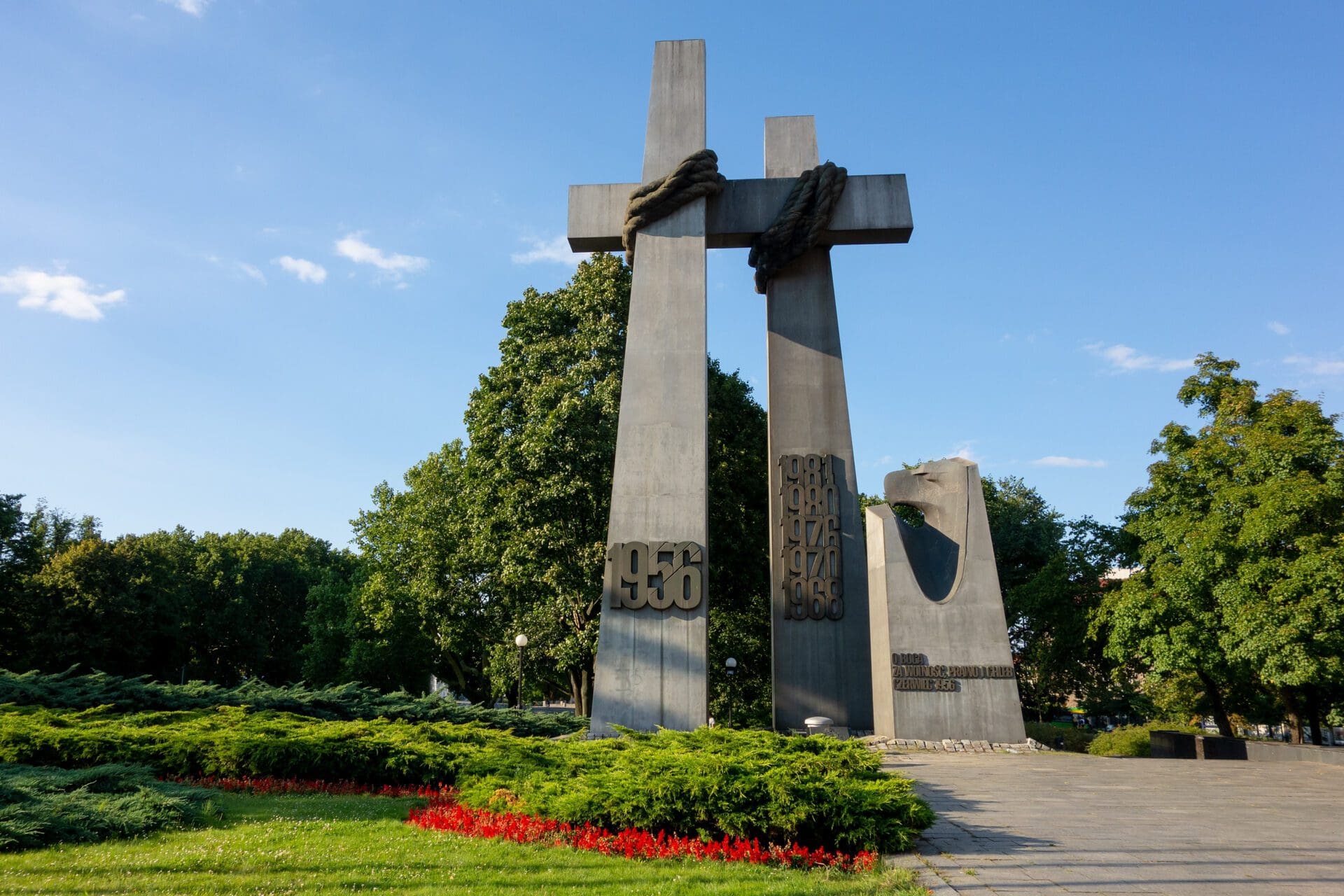Around the world, 1956 is famous for Budapest’ heroic freedom fight against the Communist dictatorship in Hungary. Less known, but equally important is the Polish Revolution during the summer of 1956 that preceded and inspired the revolutionary events in Hungary. In June 1956, disappointed with the Communist leadership, Polish industrial workers in Poznań revolted against the regime. A strike was staged on 28 June, demanding better standards of living, a wage increase and lower food prices. Soon, however, the strike escalated, with the crowed growing to 30,000 strong, and riots breaking out during which the local offices of the secret police and of the party were attacked. The establishment responded swiftly, striking back with force. Over 60 people were killed and 200 were wounded in the riots. Although the regime could re-establish order in the city in a couple of days and isolate the conflict, the riots destabilised the leadership of Poland’s Stalinist hardliners.
The workers’ uprising in Poznań led to a change in the Polish political leadership in October. The so-called Polish October that resulted in the rise of Władysław Gomułka symbolised the end of the Stalinist era Poland. Initially, the period brought about greater autonomy for Poland and some liberalisation. Due to the softening, high hopes were attached to the new regime, however, all in all, Gomułka’s leadership failed to deliver full liberalisation as Poland slipped back into a tougher authoritarian rule. Nevertheless, the temporary thaw in October meant that—unlike other countries in the Eastern Bloc—Polish people actually knew about what was going on in Hungary. Censorship was not as strong in Poland in October as it used to be, so the country knew about the progression and then about the violent defeat of the Revolution and Freedom Fight in Hungary. Aware of what is happening in Budapest, Poles were also eager to support the revolution’s cause with aid. In 1956, the aid from Poland was worth twice as much as the aid from other countries combined.
Budapest was inspired by Poland to revolt
While the Polish October enabled Poland to support Hungary in its revolutionary struggle, Budapest was inspired by Poland to revolt. Hungarian students were informed about the thaw in Warsaw via Radio Free Europe and swiftly organised a protest in support of Gomułka, demanding similar changes in Hungary. The Hungarian Writers’ Union was similarly inspired by the events in Poland, and decided to commemorate the Polish General Józef Bem, a hero of the Hungarian Revolution and Freedom Fight of 1848. During the demonstration of the afternoon of 23 October 1956, 20,000 people gathered to place a memorial wreath on the general’s statue, demanding the country’s independence from foreign powers. These protests, all inspired by the Polish events, played an integral part in the developments of the Hungarian Revolution. In turn, since the Soviet leadership expressed great opposition to Gomułka, it is not unreasonable to suggest that the Polish October could be successful partially because the Hungarian Revolution distracted Moscow’s attention away from Warsaw, allowing some time for liberalisation in Poland.
In memory of Poland’s and Hungary’s joint struggle in 1956 against Communism and Soviet occupation, multiple monuments have been erected in Poznań. On one of the main squares of the city, two crosses bound together by a giant cord remind us of the Hungarian and Polish victims of the freedom struggles of 1956. An even more remarkable salute to the heroes of 56 are the Roman (‘Romek’) Strzałkowski and Péter Mansfeld streets that run into each other. Romek, a 13-year-old pupil shot dead in Poznań during the protests, became one of the most well-known symbols of anti-Communist resistance in Poland after the regime change. Péter Mansfeld was only 15 in 1956 but his age did not prevent him from joining the armed fighting. After the crushing of the revolution, he was sentenced to death and kept in prison until he turned 18, the minimum age for capital punishment. The two streets meet near the place where Romek was shot dead and reminds us not only of the martyrdom of the youngest anti-communist heroes of these countries, but also of the strength of the Polish-Hungarian friendship.
Related Articles:







